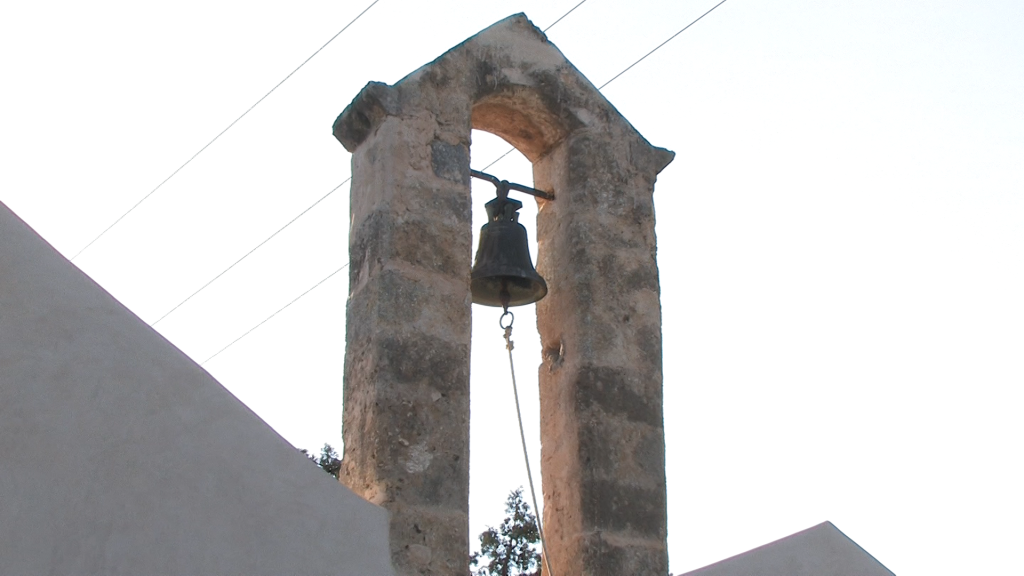Panagia Kera, a jewel of Byzantine art and spirituality nestled in the heart of Crete, Greece, stands as a testament to the enduring power of faith, culture, and artistic expression. This iconic church, with its exquisite frescoes, timeless architecture, and spiritual ambiance, is a pilgrimage site for both the devout and the admirers of art, a place where the divine and the human intersect in a harmonious symphony.

The name “Panagia Kera” translates to “Virgin Mary of Kera,” a homage to the church’s dedication to the Virgin Mary. Kera, a village nestled in the rugged Cretan landscapes, is home to this historic sanctuary. As one approaches the church, a sense of reverence fills the air—a feeling that transcends time and transports visitors to an era when the Byzantine Empire thrived and the spiritual life was intertwined with artistic creativity.
The church’s exterior, with its stone walls and red-tiled roof, exudes a sense of modest grandeur. The simple yet elegant architecture mirrors the Byzantine style that characterized the era in which it was built. As one steps through the entrance, a world of breathtaking beauty unfolds—a world where every inch of wall space is adorned with a vibrant tableau of frescoes that tell stories of faith, history, and devotion.
The interior of Panagia Kera is a symphony of color and iconography that stretches across the centuries. The walls and ceilings are a canvas of intricate frescoes, each brushstroke a testament to the skill and devotion of the artists who crafted them. Scenes from the Bible, depictions of saints, and portraits of holy figures come to life in a dazzling display of artistic mastery.
The frescoes of Panagia Kera are not mere decorative elements; they are windows into the spiritual worldview of the Byzantine period. The artwork, with its rich symbolism and detailed narratives, invites contemplation and introspection. Every image, every color, and every gesture carries a deeper meaning—a meaning that resonates with those who seek to connect with the divine through the visual language of art.
One of the most striking features of the church is its “Dormition of the Virgin” fresco, which graces the main dome. This masterpiece captures the moment of the Virgin Mary’s passing from earthly life to heavenly glory, surrounded by the apostles and angels. The fresco’s colors, its composition, and the emotion it conveys reflect the profound spiritual significance of the event it depicts.
As visitors explore the church’s interior, they encounter a series of chapels, each dedicated to a specific theme or saint. The “Miracle of the Loaves and Fishes” chapel, for instance, portrays the biblical story of abundance and faith. The “Last Judgment” chapel serves as a reminder of the eternal truths that guide human existence. Each chapel adds a layer of complexity and depth to the spiritual journey within Panagia Kera.
The church’s spiritual significance extends beyond its artistic treasures. It has been a center of pilgrimage for generations, drawing visitors from near and far who seek solace, inspiration, and a connection to the divine. The atmosphere within its walls is one of reverence and tranquility—a haven for prayer, meditation, and reflection.
The legacy of Panagia Kera’s frescoes has endured for centuries, surviving the passage of time and the challenges of history. The church’s survival, despite the turbulent events that have shaped Crete’s narrative, is a testament to the dedication of those who have preserved and protected this cultural and spiritual treasure.
As the sun’s rays filter through the church’s windows, casting a soft glow upon the frescoes, Panagia Kera radiates a sense of timeless beauty. The interplay of light and color creates an ambiance that is both ethereal and grounding, inviting visitors to step into a realm where the sacred and the artistic converge.
Panagia Kera is a beacon of spirituality and artistic excellence—a place where the brushstrokes of the past continue to illuminate the present. It invites visitors to journey through the ages, to immerse themselves in the stories of faith and humanity, and to bear witness to the enduring legacy of a church that has withstood the test of time. In Panagia Kera, the divine and the artistic intertwine, creating an experience that transcends the boundaries of space and time, and resonates with the depths of the human soul.